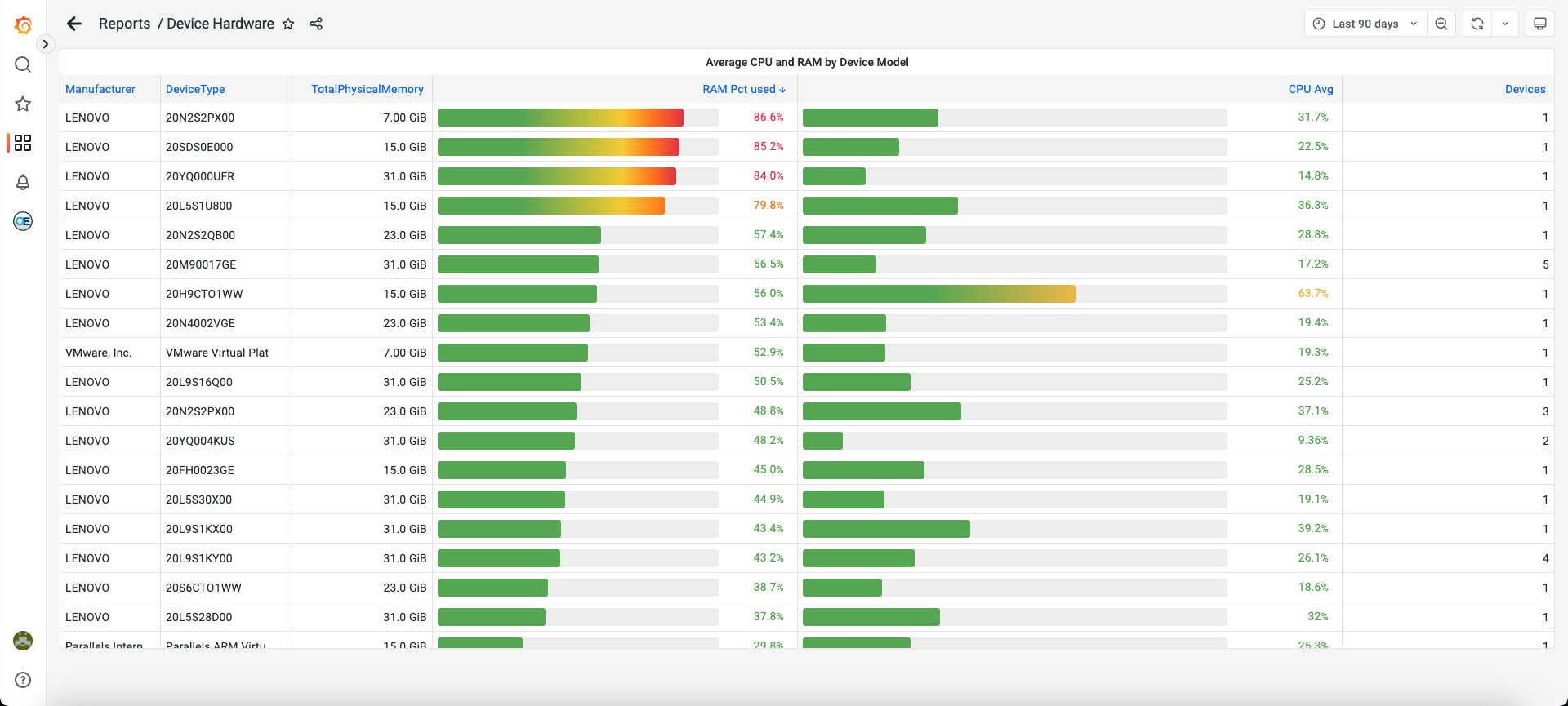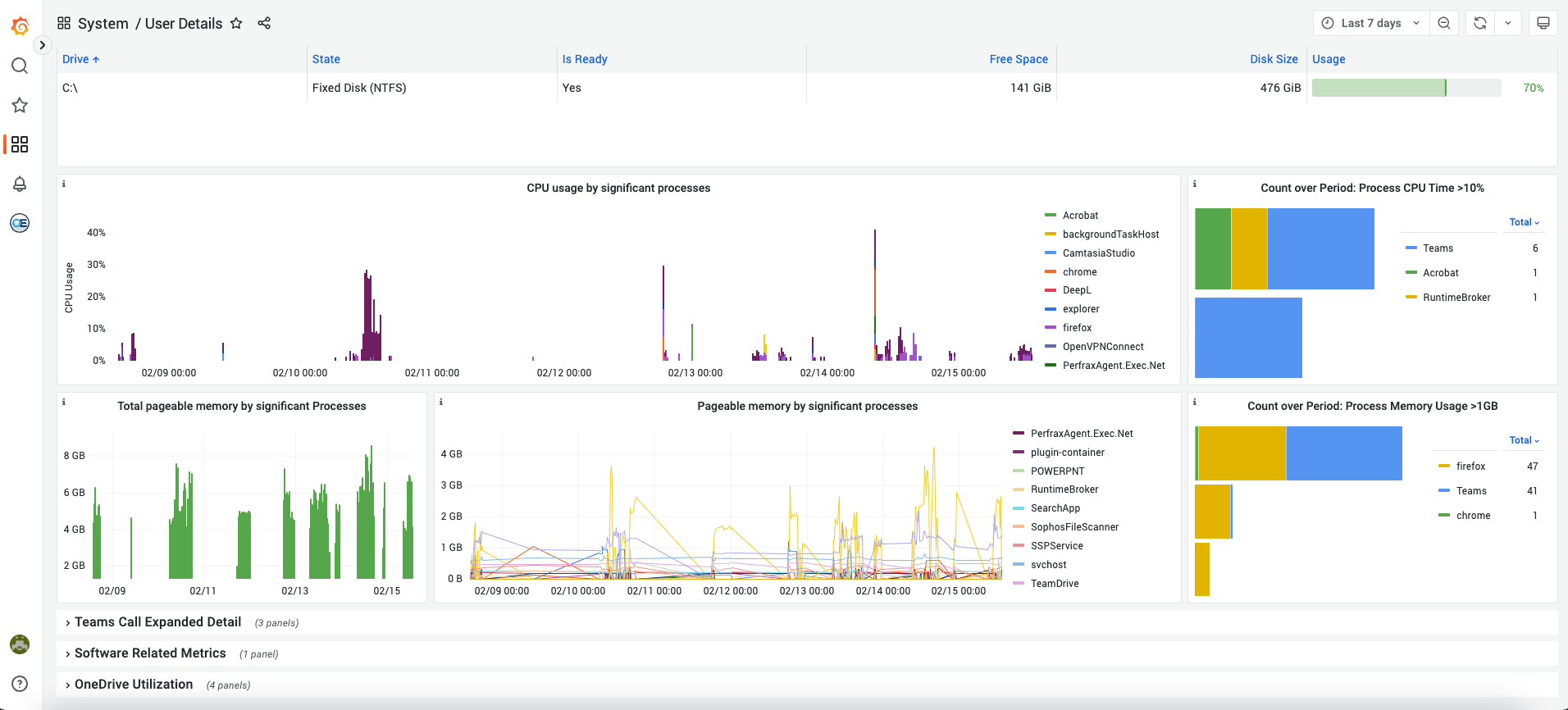Every IT operations group knows there’s always a piece of hardware in need of replacement — be it a server, a printer, or an employee’s laptop. But how does IT decide WHEN to upgrade? There are no instructions written in stone, but traditional hardware refresh cycles usually take place every three to five years. This is historically due to:
- Time passing and new software applications requiring more resources (both CPU and memory).
- Personal computers getting older and having increasing hardware failures.
These assumptions are flawed today. They force an arbitrary decision for expensive hardware refresh cycles based on a calendar date. However, the decision should be data-driven, based on the actual needs of the end-user.
There is a better, more modern way to plan hardware refresh cycles: by leveraging a Digital Experience Monitoring (DEM) solution. Analyzing the device performance of each user’s digital experience, IT operations groups can ensure users receive new devices they actually need, when they need them. By using this ‘need-based’ procurement strategy, you can reduce IT costs by delaying hardware expenses by an additional 1-2 years.
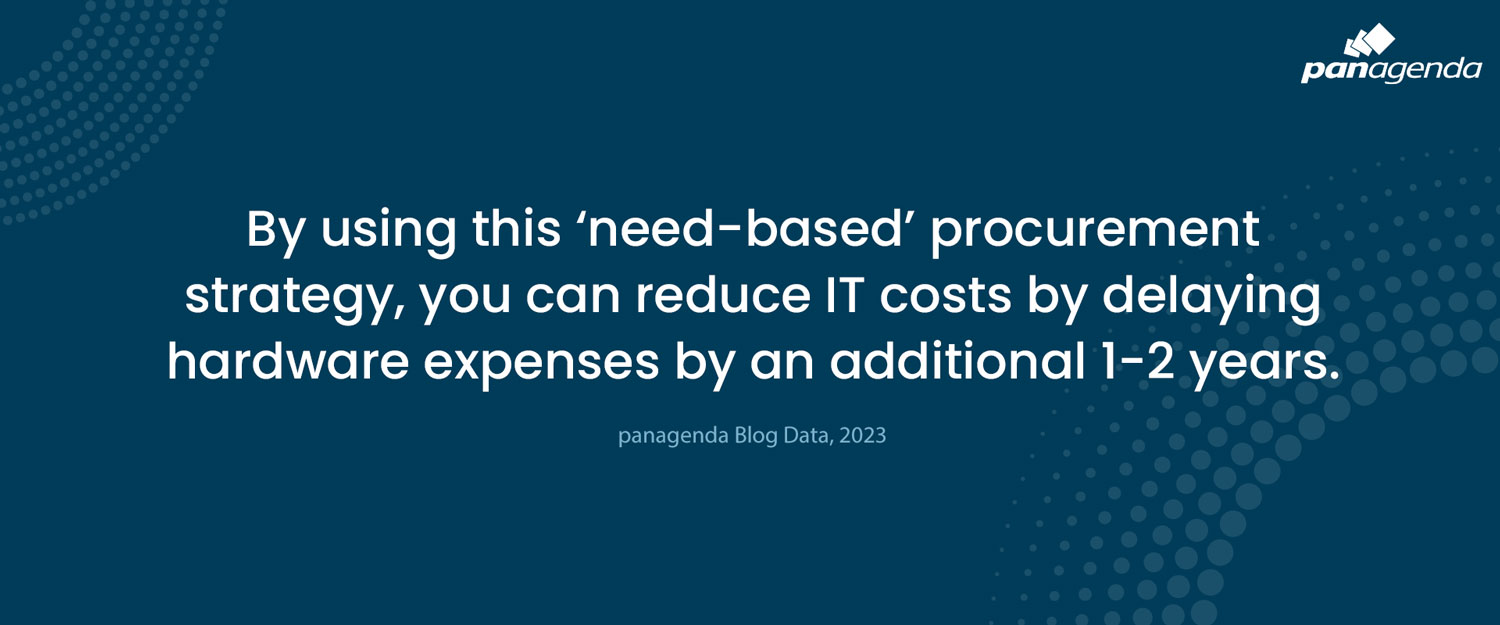
How Can a Need-Based Approach to Device Refresh Cycles Help You Reduce IT Costs?
A ‘need-based’ procurement strategy moves away from refreshing devices based on an arbitrary deadline. It relies on the telemetry data from each device to determine the user’s actual needs. This allows IT operations to identify if the device still meets acceptable digital experience parameters for daily work. What does that look like for IT cost savings?
Think of a 10,000-person organization. If the original hardware procurement occurs in cycles, we can estimate that 25% of end-users will require an upgrade every four years, which means rolling out 2,500 new devices every year.
Estimated new device cost = $1,000 (USD)
New devices procured yearly = 2,500
Yearly capital expense = $2.5 million
This isn’t a small budget consideration for IT spending. If you delay that cost by at least half every year, your mid-sized organization can invest over $1M in other initiatives, such as improving cybersecurity or upgrading video conference rooms.
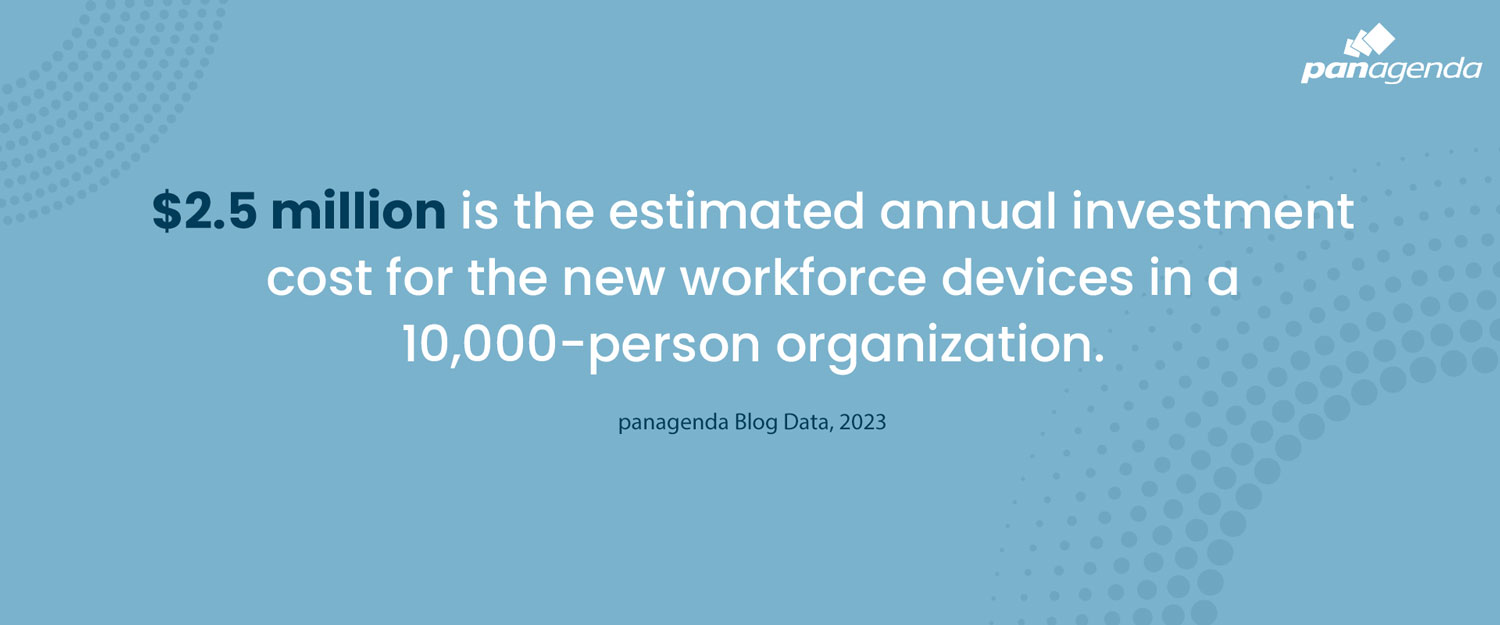
Start Monitoring Device Performance and End-User Needs
You want to reduce IT costs. Where do you start? In any need-based procurement strategy, you start out by evaluating the user’s current machine, no matter where they work, and determine if it can perform the tasks needed for their job. You need to assess the device’s resources during heavy usage and the demands of the user’s regular work activities. Monitoring real-time communications apps such as Microsoft Teams can be very helpful — they put the most stress on personal computers. These ‘fat-client’ software applications require faster machines with more memory.
You can use Microsoft Teams as the ‘canary in the coal mine’ because it provides a high-water mark for acceptable digital experience parameters. If Microsoft Teams doesn’t have the appropriate CPU and memory to process input/output of voice streams consistently, call quality suffers and end-users notice immediately.
This is where a new age DEM solution comes to the rescue with accurate performance metrics. Digital Experience Monitoring (DEM) has quickly become an essential IT requirement for enterprise organizations supporting the new world of work. Every business has gone digital to some degree. Tracking the health of end-user devices helps you maintain productivity for workers in every organization.
Some of the key metrics to monitor from the end-user device perspective include:
- CPU
- Memory
- Concurrent applications running
- Background processes running
- Disk usage / capacity
- Disk IOPS
- Network speeds / usage
Once you have determined which metrics to evaluate, IT operations needs to:
- Track the levels of digital experience during heavy activity.
- Monitor the redlines for hardware performance against those levels.
This quickly identifies which users need device replacements and which can be extended longer. For example, users running a memory-hogging app such as Microsoft Teams and experiencing degraded call quality.
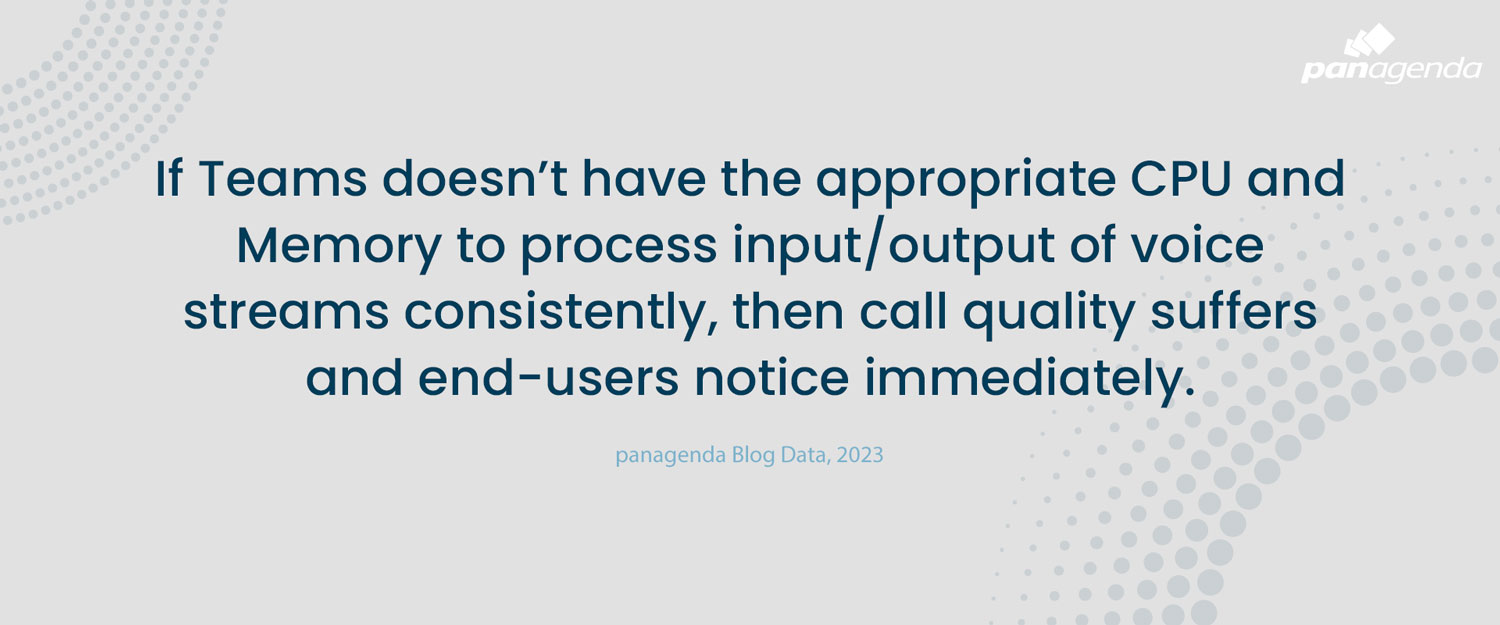
In-Depth Visibility Simplifies Hardware Refresh Needs Analysis
Traditional IT performance monitoring tools are optimized for data centers and centralized offices where employees access systems from the corporate infrastructure. These tools no longer cover today’s hybrid IT environment with so many users working outside the office. There are huge blind spots with monitoring the digital experience for these remote workers. This ‘Last Mile’ of visibility continues to be a challenge where IT operations groups struggle. They require full visibility, no matter where users work.
Most organizations can tell you what applications are on the user’s device, but not how often they are used, the performance levels, or what resources these consume. The newest DEM solutions gather all that telemetry data. They focus on monitoring the endpoint perspective, no matter where users work. They leverage smart agents running in the user context, without admin rights, and collect data directly from the endpoint device — tracking device performance and network speeds. This empowers IT operations to view the user experience ‘over their shoulder’. These agents gather performance data continually and report back to a central application where the information is aggregated and indexed for analysis and reporting. These modern DEM solutions effectively close the blind spots for monitoring the end-to-end digital experience for all workers. And they provide the accurate device performance metrics necessary to determine whether a refresh / upgrade is needed.
How a New Age DEM Solution Works
We had these features in mind during the architecture and development of OfficeExpert. This SaaS application gathers all end-user device performance information from the endpoint perspective and provides it in a single pane-of-glass for inspection. It empowers IT operations with data analysis that shows a user’s actual resource consumption and aggregates the data and combines it with valuable statistics from Microsoft CQD. This provides actionable intelligence for both IT administrators and other groups tasked with identifying underperforming end-user devices.
With this information at their fingertips, IT operations has a bird’s-eye view to measure the digital experience for user devices. Not based on a synthetic transaction or normalized data for a group of employees — OfficeExpert evaluates interactive performance during work activities to help determine the optimal resources for that individual user. Only when you link the client-side application usage and device performance analytics do you have a full understanding of the user’s true digital experience.
Example: Average CPU and RAM Usage During Microsoft Teams Calls
The example screenshot below shows how OfficeExpert reports on CPU and memory usage during peak performance segments of Microsoft Teams voice calls. Here, you can see there would be no need to swap any of the CPUs. The only bottleneck for some devices would be the RAM, usually for devices with 8 GB to 15 GB.
Example: Pageable Memory and CPU usage with Active Applications
The example screenshot below shows how OfficeExpert provides a snapshot of Active Applications and their associated CPU and memory consumption during different time slots.
The Power of DEM for ‘Need-Based’ Hardware Refresh Planning
Moving to a ‘need-based’ procurement strategy for hardware refresh cycles requires a holistic and comprehensive approach to monitoring and measuring end-user device performance. OfficeExpert is a unique DEM solution in these regards. It provides detailed, end-to-end performance data from all endpoint devices — network, CPU, memory usage, background processes running, connected hardware, drivers, and software applications. It gathers information from easily deployed, localized agents running on computer endpoints. These agents harvest the most accurate metrics to measure performance during the complete digital journey. And the information is collected and organized using powerful UI reporting and graphical dashboards. These analytics aid IT operations groups to performing root-cause analysis for network issues, identifying hardware chokepoints causing digital experience problems. To see how OfficeExpert helps you prepare for your hardware updates, register for our upcoming webinar on February 16 — live and on-demand.
The idea of a planned device refresh cycle — a knowable, consistent schedule of hardware updates — is one of the foundations of IT budgeting. New age DEM solutions like OfficeExpert can help expand IT visibility for resource constraints. They allow organizations to reduce IT costs and right-size their user devices based on objective, ‘need-based’ data — not arbitrary refresh timelines. If you are interested in finding out more about our OfficeExpert DEM solution and how it can help you implement a ‘need-based’ hardware refresh strategy, please visit our overview page online, or sign up for a trial at https://www-test.panagenda.com/products/officeexpert.

